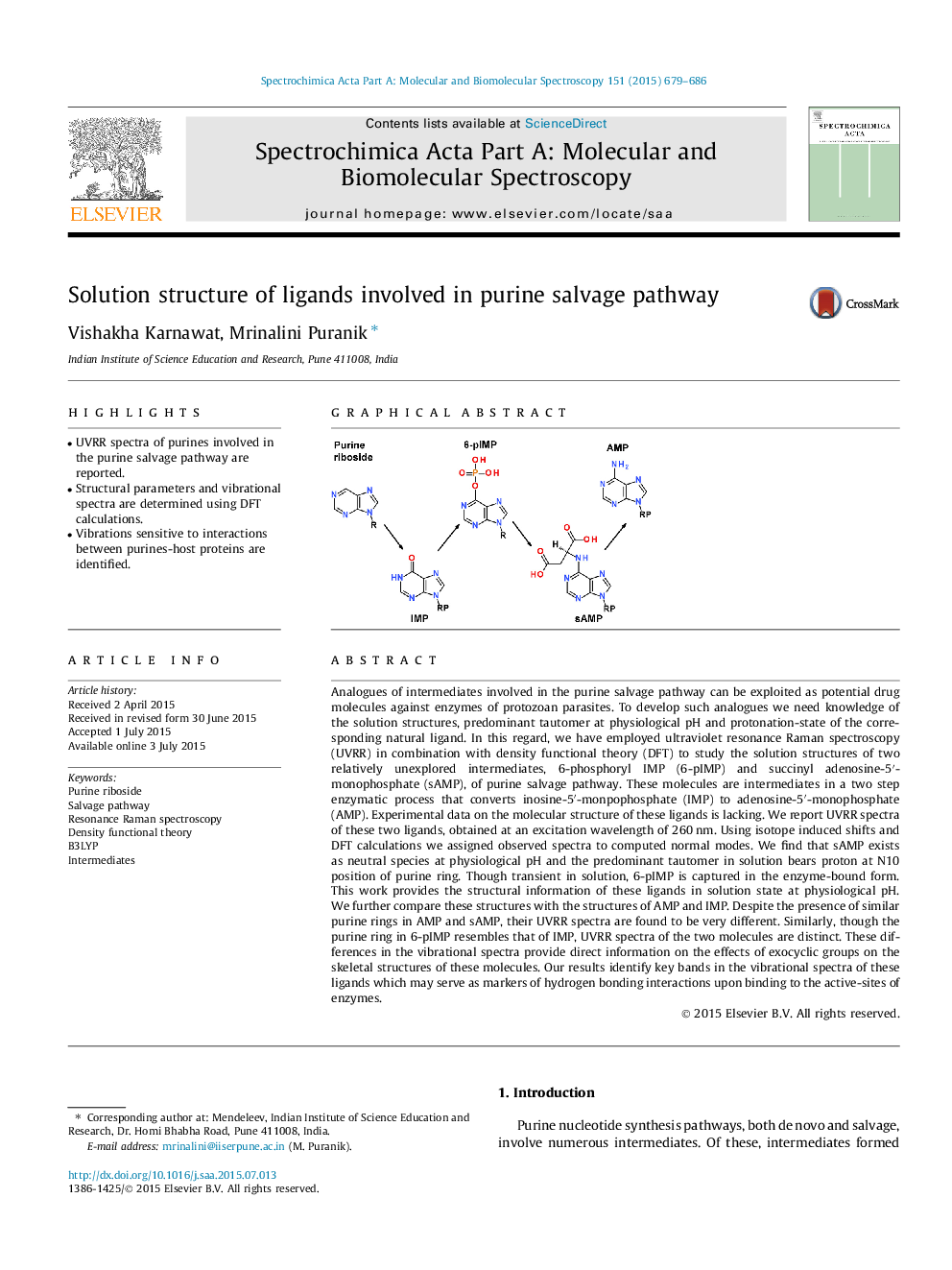| Article ID | Journal | Published Year | Pages | File Type |
|---|---|---|---|---|
| 1230129 | Spectrochimica Acta Part A: Molecular and Biomolecular Spectroscopy | 2015 | 8 Pages |
•UVRR spectra of purines involved in the purine salvage pathway are reported.•Structural parameters and vibrational spectra are determined using DFT calculations.•Vibrations sensitive to interactions between purines-host proteins are identified.
Analogues of intermediates involved in the purine salvage pathway can be exploited as potential drug molecules against enzymes of protozoan parasites. To develop such analogues we need knowledge of the solution structures, predominant tautomer at physiological pH and protonation-state of the corresponding natural ligand. In this regard, we have employed ultraviolet resonance Raman spectroscopy (UVRR) in combination with density functional theory (DFT) to study the solution structures of two relatively unexplored intermediates, 6-phosphoryl IMP (6-pIMP) and succinyl adenosine-5′-monophosphate (sAMP), of purine salvage pathway. These molecules are intermediates in a two step enzymatic process that converts inosine-5′-monpophosphate (IMP) to adenosine-5′-monophosphate (AMP). Experimental data on the molecular structure of these ligands is lacking. We report UVRR spectra of these two ligands, obtained at an excitation wavelength of 260 nm. Using isotope induced shifts and DFT calculations we assigned observed spectra to computed normal modes. We find that sAMP exists as neutral species at physiological pH and the predominant tautomer in solution bears proton at N10 position of purine ring. Though transient in solution, 6-pIMP is captured in the enzyme-bound form. This work provides the structural information of these ligands in solution state at physiological pH. We further compare these structures with the structures of AMP and IMP. Despite the presence of similar purine rings in AMP and sAMP, their UVRR spectra are found to be very different. Similarly, though the purine ring in 6-pIMP resembles that of IMP, UVRR spectra of the two molecules are distinct. These differences in the vibrational spectra provide direct information on the effects of exocyclic groups on the skeletal structures of these molecules. Our results identify key bands in the vibrational spectra of these ligands which may serve as markers of hydrogen bonding interactions upon binding to the active-sites of enzymes.
Graphical abstractFigure optionsDownload full-size imageDownload as PowerPoint slide
